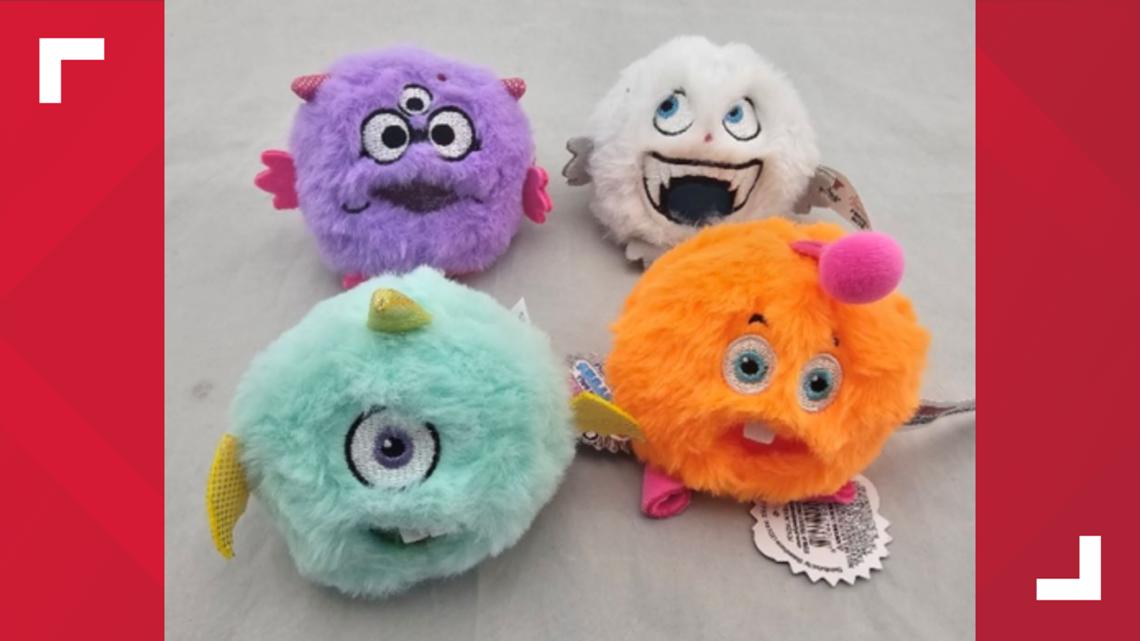- Pediatric Answers
- Posts
- Reading Tips for Parents Who Want Smart Kids
Reading Tips for Parents Who Want Smart Kids
Smart kid reading tips. Is your child too young to read? How to save 20-30% on your office visit. Throat sores are going around. Recalls on plush toys and Trader Joe's Candles. And some profanity. 🙂

The first newsletter of every month is yours for free! After that, access all my newsletters with a premium subscription. To enjoy complete access to all content—both past and upcoming—click here for a 30-Day FREE TRIAL!
What's Inside

Reading Tips for Parents Who Want Smart Kids
I’m embarrassed to admit I wasn’t a reader growing up. Sure my mom read to me and we had books in the house, but I never developed a love for it. I read what I had to for school, but rarely picked up a novel of my own accord. Maybe because I never loved it or because I now know the scientific benefits, but I have a huge desire to have my kids become readers.
According to the American Academy of Pediatrics:
“…reading proficiency by third grade is the most significant predictor of high school graduation and career success, yet two-thirds of U.S. third-graders lack competent reading skills.” (http://www.aappublications.org/content/early/2014/06/24/aapnews.20140624-2).
Wow, reading is the most important factor predicting success and 2/3 of kids aren’t there. As a country, we’ve got some work to do.
We all know reading to and with our kids is a good thing. But did you know these other benefits that science has shown?
10 benefits to reading with/to kids
Children who are read to during infancy have better language skills.
Parents who read with their children create nurturing relationships.
Children who are read to have early brain development.
Children who are read to are more school ready.
Reading (as part of a bed time routine), leads to better sleep. (Interestingly, the studies show that it needs to be with a tangible book, not an e-reader with a screen).
Kids who read have better vocabularies (and tend to score better on tests).
Reading improves memory function.
Kids who read (especially literary fiction) learn to understand and relate better to others (which can expand a child’s empathy and social understanding).
Reading reduces stress.
Kids who read, know more.
How to read with your child
Read to your kids. How hard could that be, right? The key to deriving all the benefits is recognizing the age and stage of your child.
Reading with an infant
Show the pictures and use lots of voice inflections. It’s not so much the words you are using, it’s the snuggling, pointing at pictures, interaction, and happy voice tone that matters to an infant.
Reading with a toddler
In most cases, the attention span of a toddler is shorter than this sentence. Trying to get through pages with lots of words and a “story” is likely unrealistic. Feel free to adapt the book as needed. Board books with bright pictures are great for this age. Rather than read the words, you may ask, “Where’s the puppy on this page? What does the puppy say?” or “I see a yellow duck, quack, quack; where’s the yellow duck?” or “What’s the boy doing in this picture?” Pointing out pictures is a great way to build basic vocabulary. Don’t feel the need to finish the book if your child wants to jump down from your lap and do something else. There will be other times, when your child wants to read a hundred books. Savor those moments.
Reading with a preschooler
This is the age that loves rhyme and patterns in a book. Kids this age can pick up on these patterns and “read” with you. You may ask the child to “predict” what the next page is. Don’t be frustrated when your child wants to read the same book over and over (despite your book shelf full of a hundred different books). In our house, we’ve been through more copies of “Brown Bear” than we have children. It’s a great book to review rhyme, pattern, animals, colors, animal sounds, etc.
Reading with an early reader (4-7 years)
Choose books to start with lots of pictures and just a few simple words per page. Champion when your child reads a whole book (even if the book only had a total of 15 words). As your child improves, you can move into books that have basic sight words (the, is, as, a, of, for, and, etc.). This stage of “my first reader books” or “level 1” books may take a while (a year or two). It is easy for a child at this stage to get easily frustrated. You may have to use a timer or break reading sessions into a few short (5-10 mins) sessions a day.
Reading with an emerging reader (6-9 years)
This is when you move into early chapter books. While your child will have conquered site words and basic reading rules (e.g., long vowels and sounding out words), your child will still encounter many words he or she doesn’t know. Your child will either: guess at the meaning, skip over words, or get frustrated. It is important to still be reading “with” your child at this stage to keep the momentum. I have a child in this reading stage and she will read one side of the page and I’ll read the other side. It gives her a little break when I read, keeps her interested in the story, but keeps her reading as well.
Reading with a good reader (8+ years)
This is a great age for getting a child “hooked” on a series and getting that child wanting to read. If you are lucky enough to have a child this age that still lets you read to them, choose books just beyond their reading ability. For example, when my eldest was in 2nd grade, we read the “Chronicles of Narnia” series. I read the books to him. The vocabulary was a bit beyond his reach (if he were to read it on his own), but with the context of the story and the occasional explanation, he was able to understand the story. If your child isn’t into you reading to him or her, read the same book together, but just independently. I’ve also done this with my kids. We’ll just have two book marks (one is mine and the other is the child’s). I would read after my child went to bed to catch up to his or her bookmark. Then we could talk about the book. Talking about a book with your kid (what’s happening, what the characters are thinking/doing) is a great opportunity to connect with your child and teach him or her.
How to find the time?
You may be asking yourself, the ever important question of how to find the time to do yet another thing? Finding the time is particularly difficult when you have multiple children, lots of extracurricular activities, or work outside of the home. Like balancing most things, you may have to get creative.
Have children read in the car. When you are driving in the car, you have a captive audience. I can listen to my 6 year-old read (and have her spell out words she doesn’t know), have my 10 year-old read on his own, or let my toddler look at picture books. If you can get your older children to help the younger ones, even better. (In complete honesty, it was a crash and burn when we tried it. My toddler hit my eldest in the head with the board book, screaming, “No, me do it!”)
Have older readers read with early readers. When I am getting kids to bed solo (my hats off to the single parents who do it every day), I will often have my eldest read with my emerging reader while I lay down the youngest. I will admit, it may take a little incentive (e.g., 10 mins of extra media time earned) to get my eldest to agree, but you’ve got to do what you’ve got to do.
Take advantage of programs offered by the school or community. Early in my career I was working a lot of hours and nights. I took advantage of a reading program my elementary school offered when my son was in first grade. For a small fee, he stayed after school for 30 mins when I was at work and got one-on-one reading help.
Keep books in the diaper bag/with you for times you are waiting. Throughout the day, you spend a lot of time waiting (e.g., for the doctor, getting your oil changed, picking up other kids). Instead of pulling out your iPad or phone to keep your little one quiet, pull out a book. It’s amazing how a few minutes here and there can really add up to serious time.
I assert that making time for reading has innumerable benefits and brings us closer as a family. The time has become some of my most rewarding times as a parent. Happy reading!

Fact Or Fiction: My Child Is Too Young To Read To

FALSE
It’s okay to read to babies. Yes, I’m telling you, it’s okay. At those early stages, it’s less about comprehension and more about connection. Your baby will associate those earliest memories with a loved one spending time with them.
As the child grows, the comprehension comes along with it. These times help your child with language development, imagination, and again…bonding. And, it puts them on a path to become a lifelong reader. Benefits galore—see the section above. 😉

What I’m Seeing at Work: Throat Sores

Yep, you read that correct. I’m seeing tons of sore throats caused by sores on the throat. I wrote about this bug a couple of months ago, but I’m seeing a crazy uptick in the number of cases in clinic over the last 2 weeks. It’s spreading around our local daycares like crazy. The bug is the coxsackie virus. It’s the virus that causes hand, foot, and mouth disease. If the sores are limited to the throat only, it’s called herpangina. It’s the same virus, just presenting differently.
It’s a little late in the season (typically it’s a summer bug and may extend into early fall), but viruses sometimes don’t pay attention to the calendar.
Coxsackie virus presents with tiny blisters or ulcers in the inside of the mouth (usually near the back). It’s crazy painful. The most common complication is dehydration because swallowing is so miserable. There’s no cure and no vaccine to prevent it. Ibuprofen can help significantly with the pain and swelling. It typically lasts 7-10 days.
The best we can do to prevent spread is advise sick people to stay home and wash hands frequently.
Pro Tip: This is usually a little kid bug. Most people get it once and develop life long immunity to the bug.
Fun Fact: Coxsackie virus got it’s name from Coxsackie, NY. It’s the small town where it was first isolated.


Money-Saving Tip: Self-Pay Discounts
Most people don’t know how insurance contracts work. To be included in an insurance panel, health care providers contract to take a designated payment for serviced rendered.
For example, if an office visit bill is $100, the contract may say that the provider agrees to take $80 as payment in full. The remaining $20 is a loss to the provider (it cannot be billed to the patient). The contracted payments are rarely 100% of what is billed.
Knowing this, if you don’t have insurance, most providers will offer a self pay discount. Afterall, it doesn’t make sense that the provider would get paid more from the uninsured patient than the insured patient. If the office doesn’t come right out and offer a self-pay discount, don’t hesitate to ask.
COST SAVINGS per visit/service rendered: 20-30% typically
Note: Some offices will give an additional percentage off if you pay the entire bill upfront.

WWWD: Blood Draws
I often joke that if it weren’t for my profession, we’d be at the doctor’s office weekly with one of our four kids. I use my skills at home all the time. Here, I’ll share a recent example from home and how I handled it, including the products I used. This isn’t an advertisement—I don’t have any financial interest in these products. I simply have parents ask me all the time about what to do in certain situations and the products I use.




Scenario: My youngest had to have her blood drawn and was terrified.
Let’s face it, blood draws hurt. Lucky for me (and now you), I have a trick to solve that. I applied a numbing cream prior to the blood draw so the poke wouldn’t hurt. My girl sat still as a cucumber.
The medication is EMLA (the generic is Lidocaine 2.5% and Prilocaine 2.5%).
The trick is to put it on 45-60 mins prior to the blood draw and to keep the cream in place with some Tegaderm. Don’t take it off until you are in the chair with the phlebotomist. See pics for how to do it.
Pro Tip: Ask your pediatrician to prescribe EMLA prior to any visit where you know your child is going to get blood work. Come to the visit, with the cream already applied. I like to apply to both arms to give the phlebotomist both arms as options for the best blood vessels to draw.

Recalls & Alerts: Plush Toys & Trader Joe’s Candles


Funny Things: Warning Profanity To Follow
A mom comes into my office this week and tells me about her potty training exploits with her 2.5 year old.
The child approaches mom with outstretched hands that are covered a dark brown material.
Mom: Is that chocolate or poop on your hands?
Child: Not chocolate, not poop. It’s shit!
I couldn’t help but laugh. Amazing what words little children manage to pick up.

Legal Disclaimer: The information provided in this article is for educational and informational purposes only. It is not intended as a substitute for professional advice or medical treatment. Always seek the advice of your physician or qualified healthcare provider with any questions you may have regarding a medical condition or the health and welfare of your child. We do not endorse any specific products or brands mentioned in this article. Readers are encouraged to perform their own research and consult with appropriate professionals before making any decisions based on the information provided herein.

